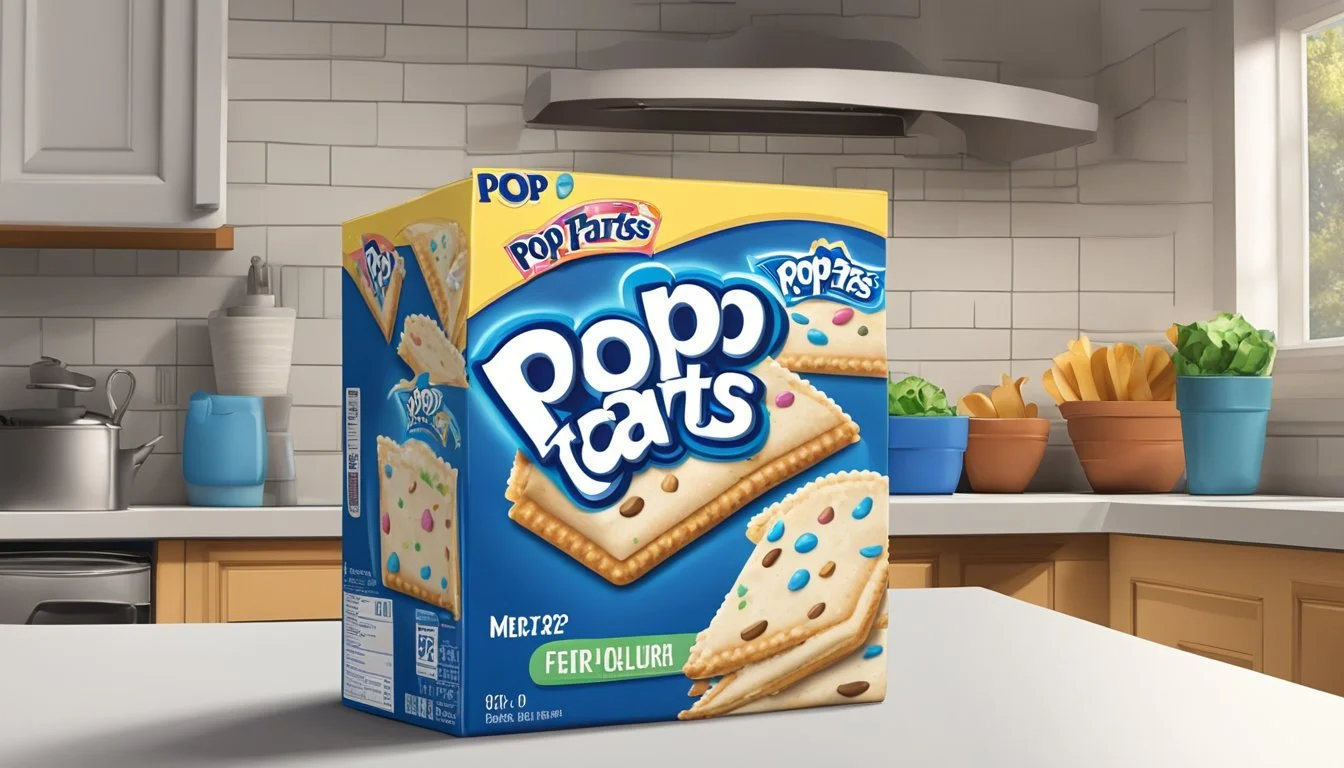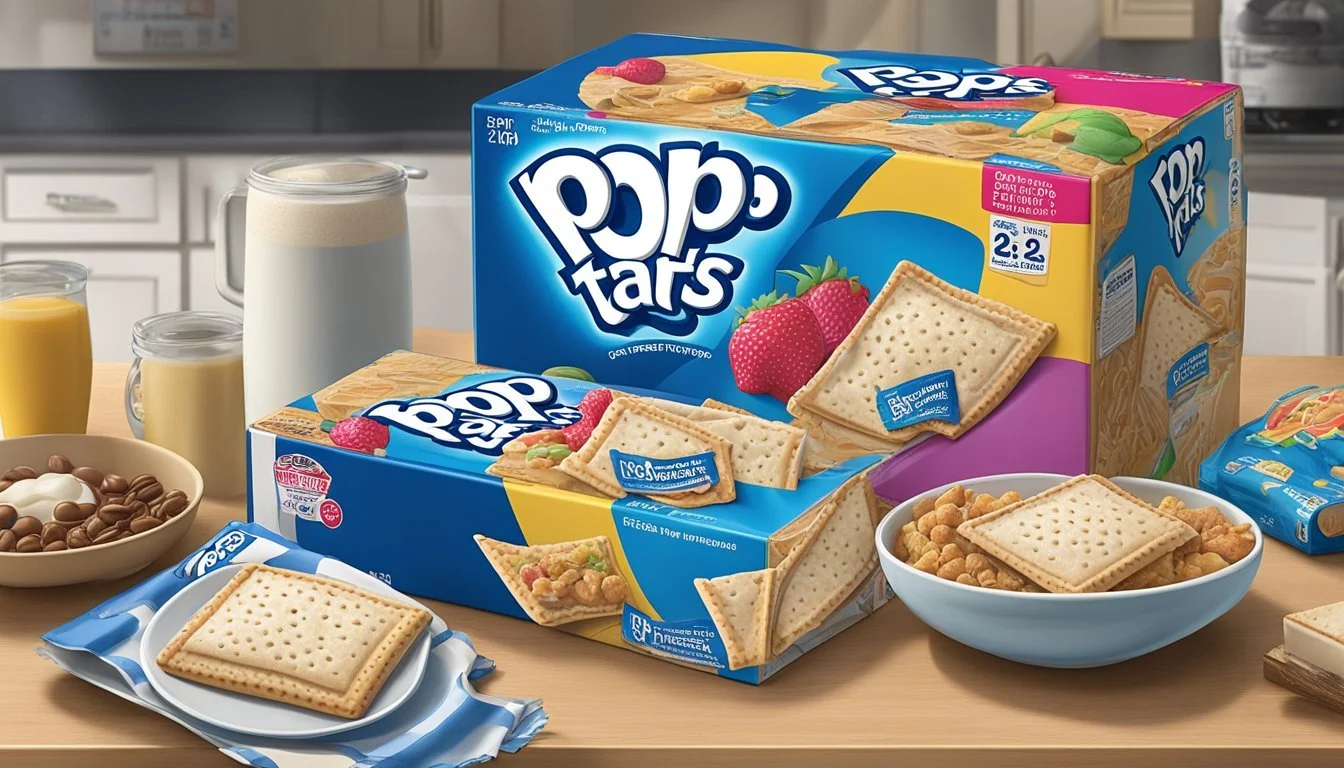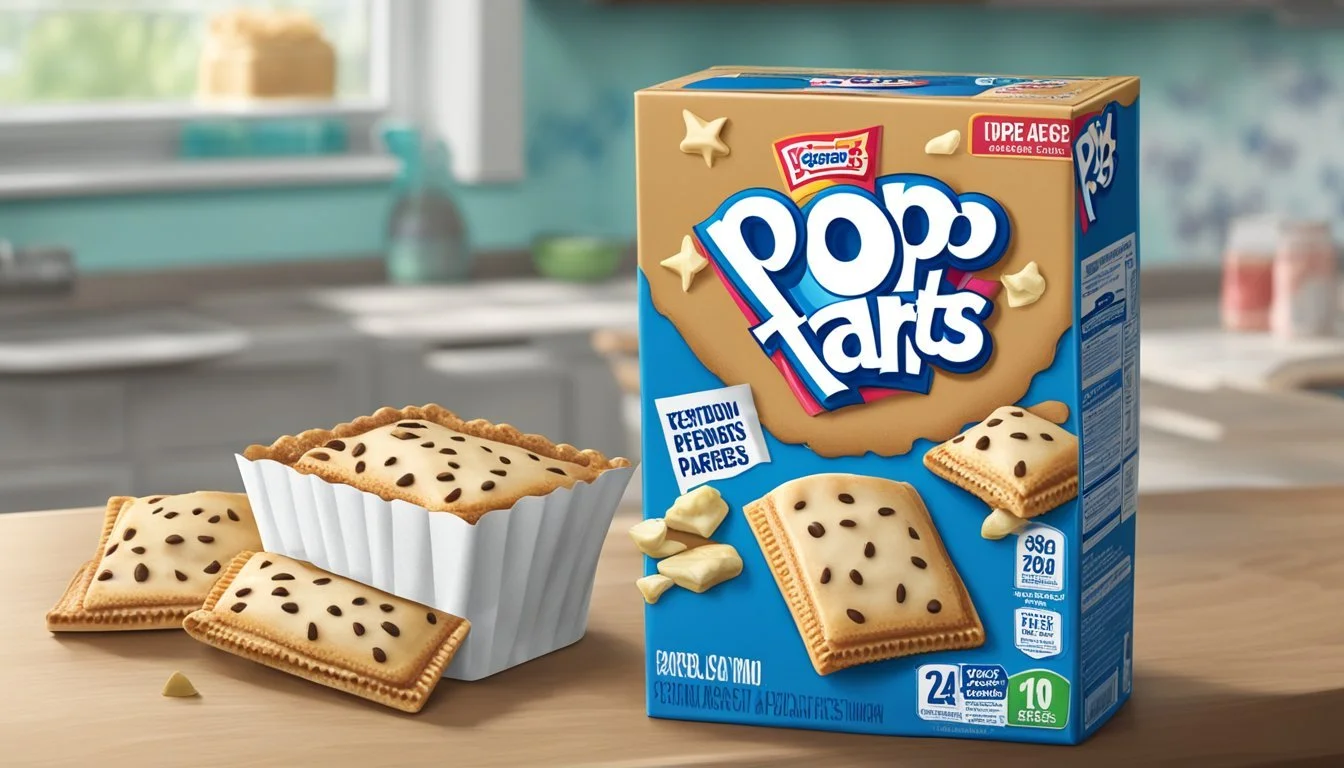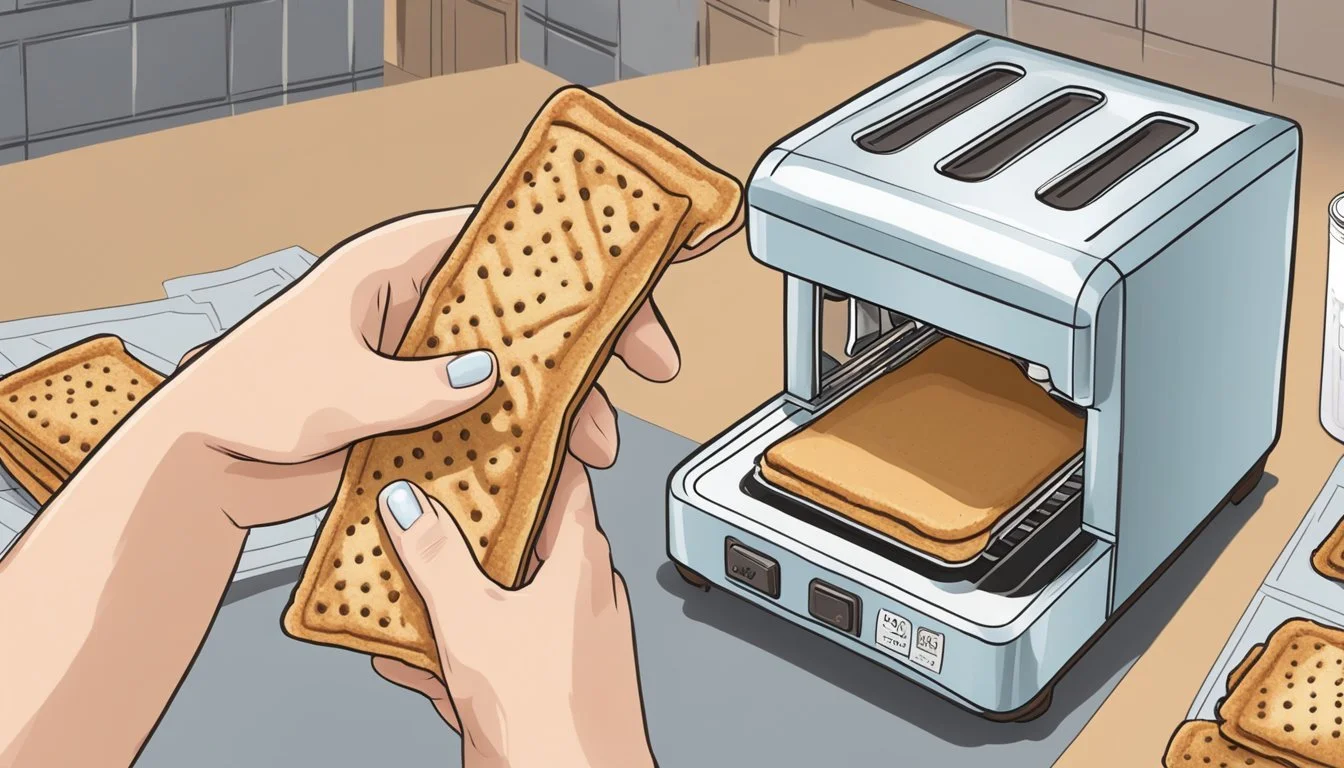How Long Do Pop-Tarts Last?
Shelf Life and Storage Tips
Pop-Tarts are a popular breakfast and snack option, known for their convenience and variety of flavors. Shelf life is an important consideration for consumers who like to stock up on pantry items such as these toaster pastries. Typically, Pop-Tarts come with a 'Best By' date printed on the packaging, which is intended by manufacturers to indicate when the product may start to decline in quality rather than safety.
The longevity of Pop-Tarts once they are brought home from the store can range from six to twelve months past the date marked on the box if they remain unopened and are stored properly. The actual shelf life can vary depending on factors such as the type of filling, the presence of preservatives, and the storage conditions. Once opened, the expectation for optimal taste and texture decreases, as exposure to air and humidity can affect the product more rapidly.
Manufacturers often outline a recommended shelf life, which for some brands of Pop-Tarts can be up to four or five years. Despite this, it's common for them to be safe to consume well beyond their 'Best By' dates, especially if they have been kept in a cool, dry environment. However, while they may still be edible, the quality of the pastries—such as taste and crispiness—might not be at their peak after the designated date. It's crucial for consumers to use their discretion when consuming pastries past their best before dates and to consider any changes in appearance or smell as indicators of quality.
Understanding Pop-Tarts
Pop-Tarts are a popular toaster pastry that come in a wide range of flavors and contain various ingredients, including sugar (how long does sugar last?), fillings, and preservatives, which contribute to their taste and shelf life.
Ingredient Breakdown
The quintessential Pop-Tart is made up of a thin pastry crust housing a sweet filling and often topped with frosting. The crust typically contains flour, oils, and sugar, forming a firm yet crumbly texture. Inside, the filling varies but common ingredients include fruit purees, such as strawberry, cherry, or blueberry, and flavor enhancers. Brown sugar cinnamon and s’mores are examples of non-fruit varieties that remain favorites. Frosting, when present, adds an additional layer of sugar and texture. To extend shelf life, preservatives are used. Nutritionally, Pop-Tarts are high in calories and sugar, making them an energy-dense snack rather than a health food.
Flavor Varieties
Pop-Tarts offer an extensive array of flavors, catering to a variety of taste preferences. Noteworthy flavor choices include:
Fruit Flavors: Strawberry, Cherry, and Blueberry
Sweet Flavors: Brown Sugar Cinnamon and S’mores
The variety of flavors ensures that Pop-Tarts continue to maintain their popularity across many age groups, appealing to those seeking a quick sweet snack. Each flavor is distinct not just in taste but also in its nutritional profile, with calorie counts and sugar content varying slightly between them.
Shelf Life and Expiration
Pop-Tarts, when stored correctly, can last significantly long due to their packaging and preservatives. The longevity varies greatly between unopened and opened Pop-Tarts, affecting their texture and quality over time.
Unopened Pop-Tarts
Unopened Pop-Tarts, sealed in their original foil packaging, typically have a shelf life of 6 to 12 months. They remain edible beyond this period but may exhibit changes in quality. The "Best Before" date printed on the packet serves as a guide to ensure optimal freshness and taste. Proper storage at room temperature can help maintain their quality.
Opened Pop-Tarts
Once the seal is broken, Opened Pop-Tarts should be consumed within 1 to 2 weeks for best quality. They may be stored in a resealed plastic wrap to protect from spoilage. Opened packages are more susceptible to moisture and air, which can accelerate the deterioration of the texture and flavor.
Expired Pop-Tarts
Expired Pop-Tarts beyond the “Best Before” date are not necessarily unsafe to eat but may not provide the best sensory experience. Visible mold or an off odor indicates spoilage, and such products should not be consumed to avoid food poisoning. While preservatives extend the shelf-life, they do not prevent eventual spoilage due to improper storage or extended time.
Storage Recommendations
Proper storage is crucial to extend the shelf life of Pop-Tarts, maintaining their quality and taste. Whether in the pantry, refrigerator, or freezer, ensuring that these toaster pastries are stored correctly can prevent them from becoming stale or going bad.
Pantry Storage
For unopened Pop-Tarts, the pantry or a kitchen cupboard offers a suitable storage option. It is recommended to:
Keep them in a cool, dry place, away from direct sunlight or any heat sources to prevent the ingredients from degrading.
Store them in their sealed original packaging to maintain freshness and protect against humidity.
Refrigeration
Refrigeration is generally not necessary for Pop-Tarts. However, if one prefers:
Store the sealed Pop-Tarts in the fridge to keep them away from room temperature variances.
Place them in an airtight container to prevent them from absorbing odors from other foods.
Freezing Pop-Tarts
Freezing is an excellent option for extending the shelf life of Pop-Tarts far beyond their "best by" date. To properly freeze them:
Ensure Pop-Tarts are in a sealed state or wrap them securely in a freezer bag or airtight container to prevent freezer burn.
Label them with the freezing date for future reference.
When ready to eat, defrost them at room temperature or use a microwave for a quick warm-up.
Remember to discard any Pop-Tarts that have gone bad or have an off smell or appearance, regardless of storage method, as this indicates spoilage.
Recognizing Spoilage
When assessing whether Pop-Tarts have spoiled, it is vital to look for clear visual changes and to trust one's sense of smell as reliable indicators of spoilage.
Visual Signs
One can often determine the state of Pop-Tarts by examining visual clues. Signs of mold growth are a definitive indicator that a pastry has gone bad. Mold may appear as fuzzy spots in various colors, including green, black, or white. Discoloration or any abnormal spots on the pastries could also suggest spoilage. Another aspect to inspect is the texture; if a Pop-Tart feels unusually soggy or has lost its characteristic crunch, it may have been compromised, especially if the plastic wrap has been opened or damaged.
Olfactory Indicators
The next step is to rely on olfactory senses. A smell off or an unusual odor emanating from the Pop-Tarts can indicate that they are not safe to eat. The aroma should be sweet and toasty if the pastries are in good condition. If one detects a stale, sour, or otherwise unpleasant smell, it may be best to err on the side of caution and discard the product to ensure food safety. This is particularly important for opened packs of Pop-Tarts, as they are more susceptible to spoilage once exposed to air.
Safety and Consumption
When concerning the longevity of Pop-Tarts, consumers should prioritize food safety and health implications. Ensuring proper handling and recognizing when to discard the product are key for safe consumption.
Food Safety Guidelines
Pop-Tarts are deemed safe to eat after their "best by" date if they have been stored properly. The date serves as a quality indicator from the manufacturer, rather than an expiration date. Consuming Pop-Tarts past this point is generally safe, but the taste and texture may decline. Proper storage—in a cool, dry place—extends their shelf life and maintains food safety. If the packaging is damaged or the product shows signs of spoilage, it's best to discard them to avoid the risk of food poisoning.
Visual Check: Look for signs of spoilage or package damage.
Storage: Keep in a sealed container in a cool, dry place.
Consumption: Can usually be eaten past the "best by" date if properly stored.
Health Considerations
While edible past their "best by" date, it's essential to consider the nutritional content of Pop-Tarts. They do not have a significant nutritional benefit and high in sugar and calories, which may affect health if consumed in large quantities over time. In terms of dietary health, moderation is recommended. Regular consumption of highly processed foods like Pop-Tarts should be balanced with a diet rich in whole foods.
Serving and Preparation
When serving Pop-Tarts, they can be enjoyed straight from the package or warmed up to enhance their flavor and texture. The following methods and recipe ideas offer various ways to prepare Pop-Tarts for consumption.
Heating Methods
Toaster: The classic preparation method for Pop-Tarts involves placing them in a toaster and heating on the lowest setting. This provides a crispy exterior while warming the filling.
Microwave: For a quick heat-up, one can place a Pop-Tart in the microwave for about 3 seconds. Care should be taken not to overheat as the filling can become very hot.
Oven Baking: For those preferring a more even heat, baking Pop-Tarts in an oven preheated to 350°F for about 10 minutes can yield a thoroughly warmed pastry.
Safety Tip: Always allow Pop-Tarts to cool slightly before eating to prevent burns from the hot filling.
Recipe Ideas
Frozen Treats: Frozen Pop-Tarts can be eaten as a cold snack, especially in warmer weather. Simply place a Pop-Tart in the freezer for at least 20 minutes before eating.
Caramel Popcorn Delight: Crumble Pop-Tarts and mix them with freshly made caramel popcorn for a sweet and crunchy treat.
Oreo and Marshmallow Surprise: Crush Oreos (how long do oreos last?) and mix them with marshmallows, placing them atop a Pop-Tart for a unique and decadent dessert after heating.
Creative Tip: Using Pop-Tarts in recipes can add a burst of flavor and texture to classic snacks and desserts.
Maximizing Freshness
Maintaining the freshness of toaster pastries such as Pop-Tarts can significantly enhance their shelf life and quality. Proper storage techniques, including optimal sealing methods, are essential for preserving the intended texture and flavor.
Proper Sealing Techniques
To extend the freshness of Pop-Tarts, one should store them in an airtight container at room temperature. Here are specific steps to ensure proper sealing:
Unopened Packages:
Keep them in their original packaging until ready to consume.
Store in a cool, dry place to protect against humidity.
Opened Packages:
Transfer the remaining pastries to an airtight container or resealable freezer bag.
Ensure the container or bag is sealed tightly to prevent air and moisture from entering.
If using a freezer bag, remove as much air as possible before sealing.
Plastic Wrap Technique:
Individually wrap leftover Pop-Tarts in plastic wrap to provide an additional moisture barrier.
Place the wrapped pastries back into the airtight container or freezer bag for added protection.
By following these techniques, one can help keep Pop-Tarts fresh and extend their shelf life beyond the best-by date. Remember, consistency in storage conditions is key to maximizing freshness.
Understanding Dates
When assessing Pop-Tarts' longevity, a consumer must consider the "Best Before" date and the effects of time on the product's quality.
Interpreting 'Best Before'
The 'Best Before' date on a package of Pop-Tarts indicates the point until which the manufacturer expects the product to maintain its optimal quality. This is not an expiration date; rather, it signifies when the peak freshness of Pop-Tarts is likely to begin declining. After this date, while they may not be at their freshest, unopened Pop-Tarts often remain safe to eat for 6-12 months, provided they are stored properly. It's crucial to understand that the 'Best Before' date is a quality indicator, not a safety cut-off.
Effects of Time on Pop-Tarts
Over time, Pop-Tarts can experience a decrease in quality even with the use of preservatives to prolong shelf life. Factors contributing to quality deterioration include texture changes, such as the pastry becoming less crisp, and potential flavor loss. However, deterioration does not equate to spoilage, and they may still be edible past the 'Best Before' date. Safe consumption is usually more a matter of quality, as spoilage is unlikely unless the Pop-Tarts are exposed to moisture or pests that could compromise the integrity of the packaging.







